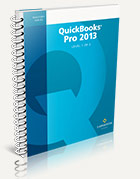By Eric Weinstein, author of Labyrinth Learning’s Excel for Accounting and Payroll Accounting


By Eric Weinstein, author of Labyrinth Learning’s Excel for Accounting and Payroll Accounting


Accounting is undoubtedly a very important field, but students sometimes struggle to become engaged with the material in their early accounting classes. A great way to increase interest in the subject is to start your Accounting 101 class with a discussion of the history of accounting. This discussion sets the stage to learn basic accounting principles, framing the subject matter in a light that is more likely to hold student attention.
A one-class discussion of the history of accounting could include the following high points:
The early use of double-entry bookkeeping by Venetian merchants
This system was first described by Luca Pacioli in the 1400s. He included in his description details about the use of debits and credits in ledgers. Today’s accounting systems still rely on these basic systems, and your students will be interested to know where they originated.
The rising need for advanced accounting systems during the Industrial Revolution.
Corporations were developed during this period, and more sophisticated accounting systems were needed to manage shareholders’ interests in firms.
The creation of the Securities and Exchange Commission in the 1930s.
When this commission was created, it became mandatory for publicly-traded companies to file reports with the SEC.
The Impact of the 2001 Enron scandal on the accounting industry.
Following this event, tougher restrictions were placed on consulting accountants to deter future scandals.
If you’re looking for a great way to teach your students the history of accounting, as well as its advanced applications, contact us at Labyrinth Learning.

People who have studied accounting understand the tedious and time-consuming effort needed to complete even a single financial statement. Not to mention the frustration of having to start over because of a single mistake, which can render an entire document useless. For businesses, using a robust and easy to use accounting software like QuickBooks is a great solution.

QuickBooks is the number one rated accounting software in the United States for a good reason. Here is a small selection of the reasons to start using QuickBooks:
For more on QuickBooks, contact us at Labyrinth Learning.
Image Source: jannoon028 (freedigitalphotos)

Who says looks don’t matter? The human eye has a natural inclination for proportion, color, and balance. If you go crazy using bells and whistles when creating your Excel charts and graphs, they can end up being difficult to read or decipher. Here are tips to make your Microsoft Excel 2013 charts and graphs pop.
Get rid of the gridlines. In theory, gridlines are there to help your eye track specific data. In reality, they create the equivalent of visual “background noise,” which mucks up the total effect and is more of a distraction than a help. Your charts will have more impact without them. Simply click on any gridline other than the top one (that will select the entire plot area). Then hit Ctrl-1 to access the formatting box. Select line color > no line, and – viola! It’s easier on the eyes.
Legend relocation. Tired of your chart legends on the right? They always make things appear off center. You can easily relocate the legend to the top or bottom of the page. Click Ctrl-1, then find the Legends category and choose Positions (called Placement on Macs). It’s much cleaner.
Sort your data. Keep the chart looking orderly and streamlined by sorting data in descending order beforehand. Once your data is sorted according to how you want it to appear in the chart, a change in data will automatically be reflected in your chart.
Use Labyrinth Learning’s Microsoft Excel 2013 software and textbooks to help your students’ Excel charts and graphs pop.

Is your business using manual accounting practices to keep track of day-to-day financial operations? If so, it’s time for HR trainers and staff to learn QuickBooks Pro. This top-selling computerized accounting software will immediately enhance the accuracy of your company’s accounting department. Best of all, you can learn how to implement computerized accounting at your local community college.
Labyrinth Learning provides effective, engaged learning software to community colleges across the nation. Our QuickBooks Pro (QB) products are some of the most sought after resources on the market because they teach business owners and employees the skills they need to improve their accounting departments.
Don’t be overwhelmed by the idea of switching to computerized accounting methods. A few community college courses are all your employees need to transform your business’s financial outlook.